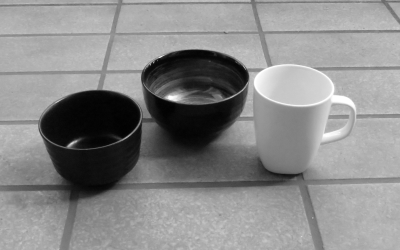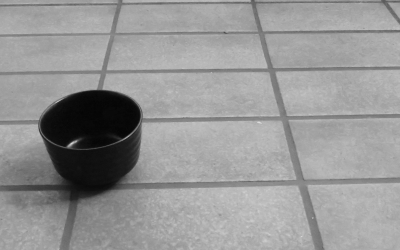Lecture - Image Processing
3. Basic Methods II: Image operations
3.14. Image Arithmetic II
The multiplication of two images can for example be used to highlight ranges of brightness in an image. This can be done by using a sequence of multiplications to create a discontinuous transfer function. Another useful application is the masking of an image, i.e. the multiplication of a normal image with an image whose values are only 0 or 1. This way sections of the original image are cut away (or painted black) by multiplying them with 0 and the remaining sections with 1. Multiplication must be normalized to produce resulting images with pixel values in the range of 0 ... 1. After the multiplication the values are scaled back to their original range (e.g. 0 ... 255). In the example below, the result becomes a bit darker than the images A and B, since values in the range of 0 ... 1 are multiplied with each other. The pixel values of the bright cup on the right are reduced significantly, leading to the "ghostly" appearance in front of the background. The new pixel values are determined as follows:
\( p_A(x,y)' = p_A(x,y) / p_{max} \)
\( p_B(x,y)' = p_B(x,y) / p_{max} \)
\( p_{A \cdot B}(x,y) = p_A(x,y)' \cdot p_B(x,y)' \cdot p_{max}\)
As with multiplication, the division of two images needs to be normalized to the range 0 ... 1. Dividing images is also an effective and sensitive tool for highlighting differences between the images. However, the operation can prove challenging since the result spans a wide range of values and the division by 0 (black pixels) is undefined. In this case we limit the resulting pixel value to \( p_{max} \) (white). After normalizing image A and B same as for the multiplication process, the division is done by:
\( p_{A/B}(x,y) = p_A(x,y)' / p_B(x,y)' \cdot p_{max}\)
In the example below we perform the operation B/A. This especially highlights the cup in the middle, because the background in image B is divided by the relatively dark pixel values of the cup itself.


Fig. 3.15: Image A (left) and image B (right)
